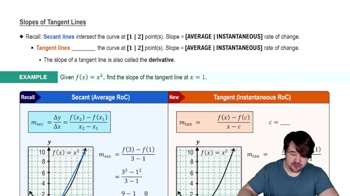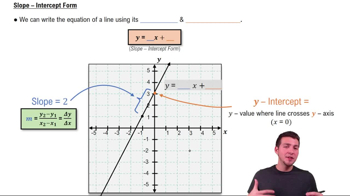Find the points on the curve y = 2x³ - 3x² - 12x + 20 where the tangent line is
a. perpendicular to the line y = 1 - (x/24).
_
b. parallel to the line y = √2 - 12x.
 Verified step by step guidance
Verified step by step guidance Verified video answer for a similar problem:
Verified video answer for a similar problem:



 5:13m
5:13mMaster Slopes of Tangent Lines with a bite sized video explanation from Patrick
Start learning